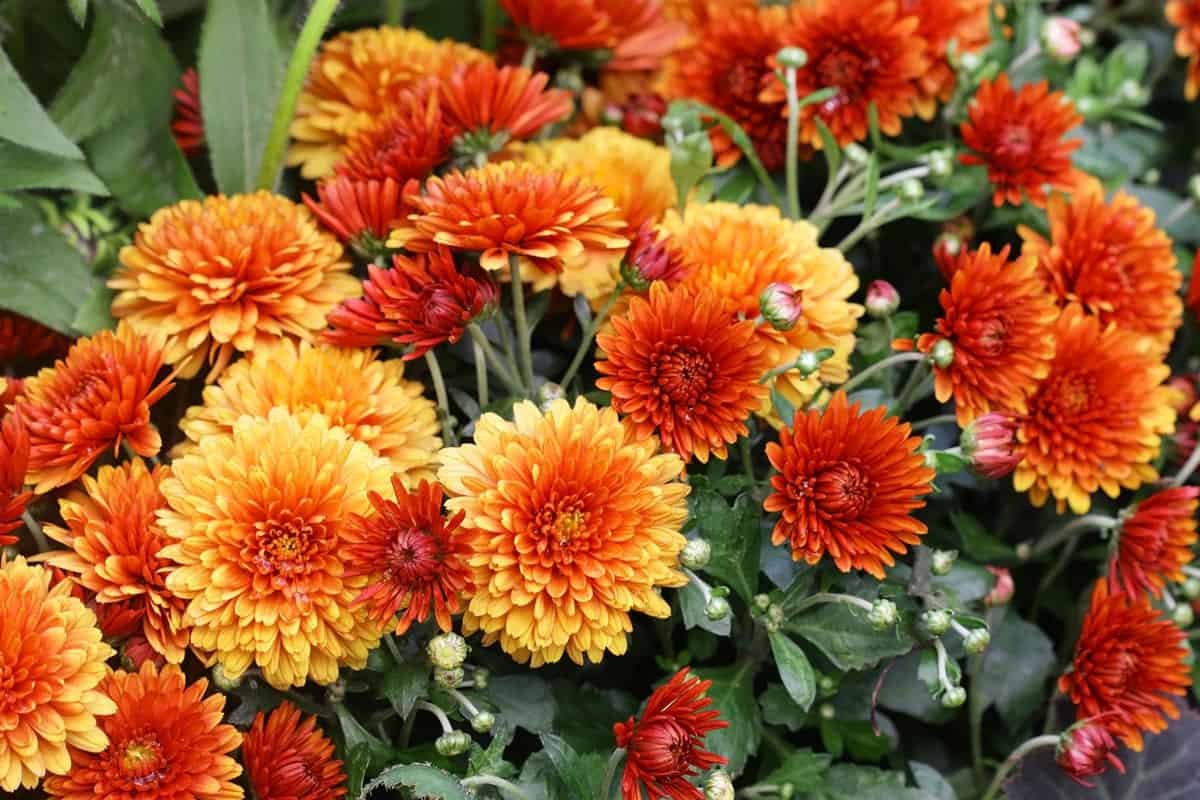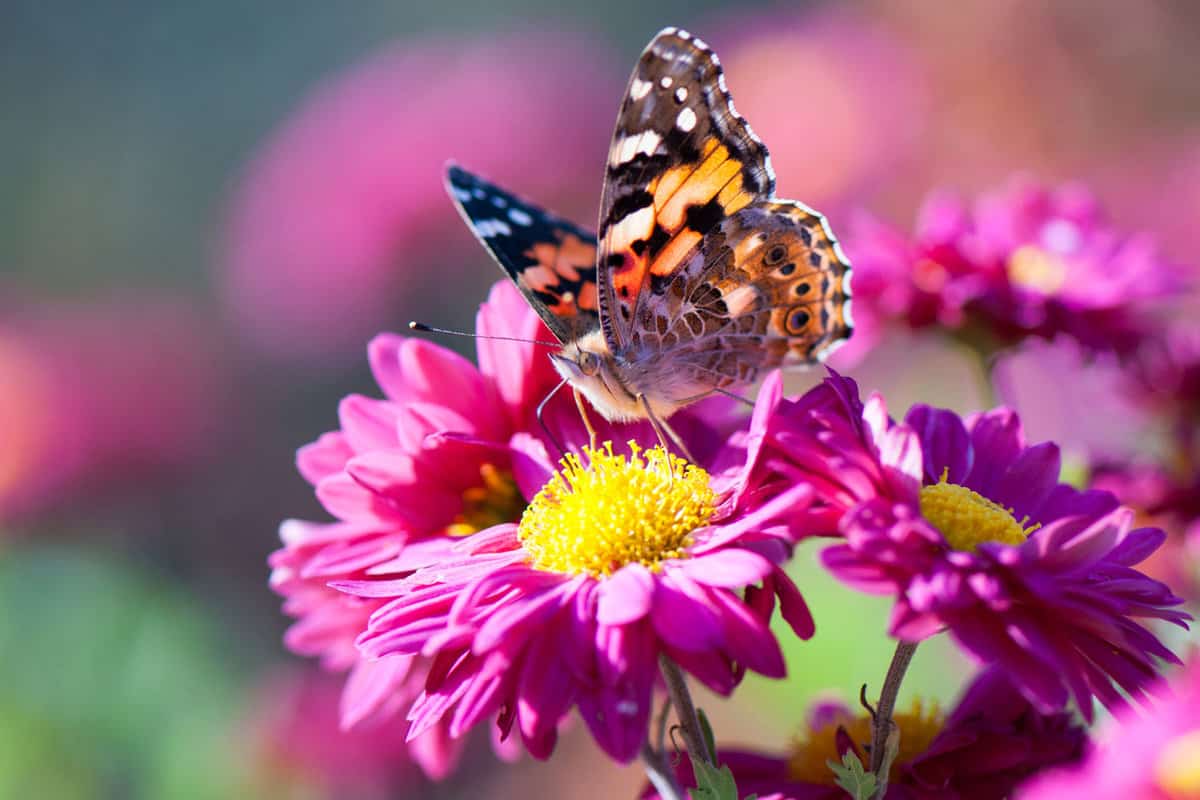Are you a fan of chrysanthemums? These beautiful flowers can brighten any garden with vibrant colors and unique shapes.
However, chrysanthemums are susceptible to pests and diseases like any other plant.

In this article, we will explore the different types of pests and diseases that can affect chrysanthemums and provide you with tips on how to prevent and treat them.
Some common pests that can attack your chrysanthemums include aphids, thrips, and whiteflies.
These insects can cause damage to the leaves and flowers of your plants, leading to stunted growth and reduced bloom quality.
Additionally, chrysanthemums can be affected by diseases such as powdery mildew and leaf spot, which can cause discoloration and defoliation.
However, with proper care and attention, you can prevent these issues from occurring and keep your chrysanthemums healthy and thriving.
So, let's get started!
What To Know About Chrysanthemums
Chrysanthemums, or mums, are beautiful and popular flowers in various colors and shapes. They are often used in gardens, floral arrangements, and as cut flowers.
Understanding the different types of chrysanthemums is important to prevent and address pest and disease issues.
There are eight main types of mums, including:
- Decorative
- Pompon
- Spider
- Spoon
- Quill
- Incurve
- Reflex
- Anemone
Knowing which type of mum you have can help you identify and address any issues.
Related: 8 Types Of Mums: Your Guide To Chrysanthemums
Common Pests in Chrysanthemums
Aphids
Aphids are small, soft-bodied insects that can be found on the leaves and stems of chrysanthemums.
They are usually green or yellow in color and can reproduce quickly, causing damage to the plant.
Signs of an aphid infestation include yellowing or curling leaves, stunted growth, and honeydew (a sticky substance) on the leaves.
To prevent aphids, you can:
- Remove any weeds or debris around the plant that can attract aphids
- Use insecticidal soap or neem oil to kill aphids on contact
- Introduce natural predators, such as ladybugs or lacewings, to the garden
Spider Mites
Spider mites are tiny pests that can be difficult to see with the naked eye. They are usually found on the undersides of leaves and can cause yellowing or bronzing of the foliage and webbing on the plant.
Spider mites thrive in hot, dry conditions and can reproduce quickly, seriously threatening chrysanthemums.
To prevent spider mites, you can:
- Increase humidity around the plant by misting it regularly
- Use insecticidal soap or neem oil to kill spider mites on contact
- Introduce natural predators, such as predatory mites or ladybugs, to the garden
Thrips
Thrips are slender insects that can be found on the leaves and flowers of chrysanthemums.
They are usually brown or black in color and can cause damage to the plant by sucking the sap from the leaves and flowers. Signs of a thrip infestation include distorted or discolored leaves and flowers.
To prevent thrips, you can:
- Remove any weeds or debris around the plant that can attract thrips
- Use insecticidal soap or neem oil to kill thrips on contact
- Introduce natural predators, such as predatory mites or lacewings, to the garden
Whiteflies
Whiteflies are small, winged insects found on the undersides of leaves. They are usually white or yellow in color and can cause damage to the plant by sucking the sap from the leaves.
Signs of a whitefly infestation include yellowing or wilting leaves and the presence of honeydew on the leaves.
To prevent whiteflies, you can:
- Remove any weeds or debris around the plant that can attract whiteflies
- Use insecticidal soap or neem oil to kill whiteflies on contact
- Introduce natural predators to the garden, such as parasitic wasps or ladybugs.
Common Diseases in Chrysanthemums
Powdery Mildew
Powdery mildew is a fungal disease that affects many plants, including chrysanthemums. It appears as a white or gray powdery coating on the surface of the leaves stems, and flowers.
The fungus thrives in warm, humid conditions and can spread quickly if not treated promptly.
To prevent powdery mildew, ensure your chrysanthemums are planted in well-draining soil and have good air circulation.
Water the plants at the base to avoid wetting the leaves.
Remove the affected leaves and spray the plant with a fungicide if you notice powdery mildew on your chrysanthemums.
Leaf Spot
Leaf spot is another common fungal disease that affects chrysanthemums. It appears as circular or irregular spots on the leaves, which may be yellow, brown, or black.
The spots may also have a yellow halo around them. The disease can cause defoliation and weaken the plant.
Avoid overhead watering and remove any infected leaves immediately to prevent leaf spots. You can also apply a fungicide to protect the plant from the disease.
Crown Gall
Crown gall is a bacterial disease that affects the roots and stems of chrysanthemums.
It appears swollen, rough, and irregular growths on the plant's crown or roots. The disease can weaken the plant and make it more susceptible to other diseases.
Avoid planting chrysanthemums in soil previously infected with the disease to prevent crown gall. You can also apply a bactericide to protect the plant from the disease.
Root Rot
Root rot is a fungal disease that affects the roots of chrysanthemums. It appears as brown or black roots that are soft and mushy. The disease can cause the plant to wilt and die.
To prevent root rot, make sure your chrysanthemums are planted in well-draining soil and avoid overwatering. You can also apply a fungicide to protect the plant from the disease.
Preventive Measures
Preventing pests and diseases from attacking your chrysanthemum plants is the best way to ensure their health and longevity.

You can take several preventive measures to minimize the infestation risk. Here are some of the most effective methods:
Other Practices
- Cleanliness: Keep your garden clean and free of debris. Dead leaves, flowers, and stems can harbor pests and diseases, so remove them regularly. Also, avoid overwatering your plants, as excess moisture can lead to fungal growth.
- Planting: Select healthy plants and plant them in well-draining soil that receives adequate sunlight. Avoid overcrowding your plants, which can increase humidity and pest infestations.
- Mulching: Mulch your chrysanthemums in the spring to discourage nematodes from climbing up from the soil. Use drip irrigation to help prevent leaf wetness and reduce the spread of foliar nematodes.
- Pruning: Regularly prune your plants to remove dead or damaged branches. This will help improve air circulation and reduce the risk of fungal growth.
Biological Control
- Beneficial Insects: Encourage beneficial insects like ladybugs and lacewings in your garden. They can help control pests like aphids and whiteflies.
- Nematodes: Use beneficial nematodes to control soil-dwelling pests like root aphids and fungus gnats. These microscopic worms are harmless to humans and pets but can effectively control pests.
Chemical Control
- Insecticides: Use insecticides as a last resort. Choose a product labeled for use on chrysanthemums and follow the instructions carefully. Avoid using broad-spectrum insecticides, as they can harm beneficial insects.
- Fungicides: Use fungicides to control fungal diseases. Choose a product labeled for use on chrysanthemums and follow the instructions carefully.
Related: Can You Use Pest Oil On Vegetables?
Final Words
Having journeyed through this blog, you're no longer left in the dark regarding safeguarding your beloved chrysanthemums.
You're empowered with insights to ward off pests and dastardly diseases. Remember, vigilance and proactive care are your best allies.
Rest easy and relish the sight of vibrant, flourishing chrysanthemums gracing your space throughout the season.
